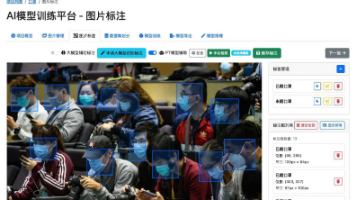AI无人机巡检:智能运维新纪元
人工智能技术的引入使得这些数据能够被深度分析和利用,极大提升了巡检效率和准确性。以电力巡检为例,一架中型无人机单次飞行可采集超过50GB的原始数据,包含数万张高清图像和对应的地理位置信息。完整的无人机AI巡检系统需要将各个模块有机集成,并提供直观的可视化界面。基于深度学习的缺陷检测算法可以自动识别设备表面的裂纹、腐蚀等缺陷,准确率可达95%以上。随着5G/6G通信、边缘计算和AI算法的持续进步,无
人工智能与无人机大数据巡检的技术融合
无人机技术的快速发展为各行业巡检工作带来了革命性变化。通过搭载高清摄像头、红外传感器、激光雷达等设备,无人机能够高效采集海量巡检数据。人工智能技术的引入使得这些数据能够被深度分析和利用,极大提升了巡检效率和准确性。
无人机大数据采集的关键技术
现代无人机通常配备多模态传感器系统,能够同时采集可见光图像、红外热成像、激光点云等多种数据。以电力巡检为例,一架中型无人机单次飞行可采集超过50GB的原始数据,包含数万张高清图像和对应的地理位置信息。
数据采集过程中需要解决的关键技术包括:
- 高精度定位系统(RTK GPS)确保厘米级定位精度
- 时间同步系统保证传感器数据与位置信息严格对齐
- 自适应拍摄算法根据飞行高度自动调整相机参数
- 边缘计算设备实现飞行过程中的数据预处理
典型的无人机数据采集代码框架(Python示例):
import dronekit
from pymavlink import mavutil
def setup_drone():
connection_string = '/dev/ttyACM0'
drone = dronekit.connect(connection_string, wait_ready=True)
return drone
def configure_sensors(drone):
# 设置相机参数
drone.camera.set_mode('RGB')
drone.camera.set_resolution('3840x2160')
drone.camera.set_interval(2) # 每2秒拍摄一次
# 设置红外传感器
drone.thermal.set_sensitivity('high')
return drone
def automated_flight_plan(drone, waypoints):
drone.mode = dronekit.VehicleMode("GUIDED")
for wp in waypoints:
target_location = dronekit.LocationGlobalRelative(
wp['lat'], wp['lon'], wp['alt'])
drone.simple_goto(target_location)
while drone.mode.name=="GUIDED":
remaining_distance = get_distance_metres(
drone.location.global_frame, target_location)
if remaining_distance <= 1:
break
time.sleep(1)
if wp.get('capture', False):
capture_data(drone)
return drone
def capture_data(drone):
timestamp = datetime.now().isoformat()
position = drone.location.global_frame
# 同步采集多种传感器数据
rgb_image = drone.camera.capture()
thermal_image = drone.thermal.capture()
lidar_data = drone.lidar.get_scan()
save_to_database({
'timestamp': timestamp,
'position': position,
'rgb': rgb_image,
'thermal': thermal_image,
'lidar': lidar_data
})
人工智能数据处理与分析
采集到的大数据需要通过人工智能算法进行处理分析。典型的处理流程包括数据清洗、特征提取、异常检测和决策支持。
计算机视觉算法在图像分析中发挥关键作用。基于深度学习的缺陷检测算法可以自动识别设备表面的裂纹、腐蚀等缺陷,准确率可达95%以上。红外热成像分析能够发现设备过热等潜在故障。
TensorFlow实现的基础缺陷检测模型:
import tensorflow as tf
from tensorflow.keras import layers
def build_defect_detection_model(input_shape=(256,256,3)):
inputs = tf.keras.Input(shape=input_shape)
# 特征提取层
x = layers.Conv2D(32, 3, activation='relu')(inputs)
x = layers.MaxPooling2D()(x)
x = layers.Conv2D(64, 3, activation='relu')(x)
x = layers.MaxPooling2D()(x)
x = layers.Conv2D(128, 3, activation='relu')(x)
x = layers.MaxPooling2D()(x)
# 分类头
x = layers.Flatten()(x)
x = layers.Dense(64, activation='relu')(x)
outputs = layers.Dense(1, activation='sigmoid')(x)
model = tf.keras.Model(inputs, outputs)
model.compile(optimizer='adam',
loss='binary_crossentropy',
metrics=['accuracy'])
return model
def train_model(model, train_data, val_data):
early_stopping = tf.keras.callbacks.EarlyStopping(
monitor='val_loss', patience=5)
history = model.fit(
train_data,
validation_data=val_data,
epochs=50,
callbacks=[early_stopping])
return model, history
def predict_defects(model, new_images):
predictions = model.predict(new_images)
return predictions > 0.5 # 返回布尔型预测结果
三维点云数据处理技术
激光雷达采集的三维点云数据需要特殊处理。点云分割算法可以将场景中的不同物体分离,便于针对性地分析设备状态。基于深度学习的点云处理框架PointNet能够直接处理无序点云数据。
PyTorch实现的简化版PointNet架构:
import torch
import torch.nn as nn
import torch.nn.functional as F
class TNet(nn.Module):
"""空间变换网络"""
def __init__(self, k=3):
super().__init__()
self.conv1 = nn.Conv1d(k, 64, 1)
self.conv2 = nn.Conv1d(64, 128, 1)
self.conv3 = nn.Conv1d(128, 1024, 1)
self.fc1 = nn.Linear(1024, 512)
self.fc2 = nn.Linear(512, 256)
self.fc3 = nn.Linear(256, k*k)
self.k = k
def forward(self, x):
batchsize = x.size()[0]
x = F.relu(self.conv1(x))
x = F.relu(self.conv2(x))
x = F.relu(self.conv3(x))
x = torch.max(x, 2, keepdim=True)[0]
x = x.view(-1, 1024)
x = F.relu(self.fc1(x))
x = F.relu(self.fc2(x))
x = self.fc3(x)
identity = torch.eye(self.k, requires_grad=True).repeat(
batchsize, 1, 1)
if x.is_cuda:
identity = identity.cuda()
x = x.view(-1, self.k, self.k) + identity
return x
class PointNetSeg(nn.Module):
"""点云分割网络"""
def __init__(self, num_classes):
super().__init__()
self.input_transform = TNet(k=3)
self.feature_transform = TNet(k=64)
self.conv1 = nn.Conv1d(3, 64, 1)
self.conv2 = nn.Conv1d(64, 128, 1)
self.conv3 = nn.Conv1d(128, 1024, 1)
self.fc1 = nn.Linear(1024, 512)
self.fc2 = nn.Linear(512, 256)
self.fc3 = nn.Linear(256, 128)
self.conv4 = nn.Conv1d(128, num_classes, 1)
def forward(self, x):
num_points = x.size()[2]
# 输入变换
transform = self.input_transform(x)
x = x.transpose(2, 1)
x = torch.bmm(x, transform)
x = x.transpose(2, 1)
# 特征提取
x = F.relu(self.conv1(x))
# 特征变换
transform = self.feature_transform(x)
x = x.transpose(2, 1)
x = torch.bmm(x, transform)
x = x.transpose(2, 1)
point_features = x
x = F.relu(self.conv2(x))
x = F.relu(self.conv3(x))
global_feature = torch.max(x, 2, keepdim=True)[0]
# 特征融合
x = global_feature.repeat(1, 1, num_points)
x = torch.cat([point_features, x], 1)
# 分割头
x = F.relu(self.fc1(x.view(-1, 1024)))
x = F.relu(self.fc2(x))
x = F.relu(self.fc3(x))
x = self.conv4(x.unsqueeze(2).repeat(1,1,num_points))
return x.squeeze(1)
实时边缘计算与云端协同
为满足实时性要求,无人机巡检系统通常采用边缘-云端协同计算架构。边缘设备完成数据预处理和简单分析,复杂任务则上传至云端处理。
典型的边缘-云端协同处理流程:
- 边缘设备进行数据压缩和加密
- 5G网络实现高速数据传输
- 云端分布式计算框架处理海量数据
- 分析结果通过API返回给终端用户
基于Kubernetes的云端处理集群部署示例:
apiVersion: apps/v1
kind: Deployment
metadata:
name: inspection-processor
spec:
replicas: 10
selector:
matchLabels:
app: processor
template:
metadata:
labels:
app: processor
spec:
containers:
- name: processor
image: inspection-processor:latest
resources:
limits:
cpu: "2"
memory: 8Gi
ports:
- containerPort: 8080
env:
- name: MODEL_PATH
value: "/models/defect-detection"
---
apiVersion: v1
kind: Service
metadata:
name: processor-service
spec:
selector:
app: processor
ports:
- protocol: TCP
port: 80
targetPort: 8080
系统集成与可视化展示
完整的无人机AI巡检系统需要将各个模块有机集成,并提供直观的可视化界面。WebGIS技术能够将巡检结果在地图上直观展示,VR/AR技术则支持工程师对重点部位进行沉浸式检查。
React实现的基础可视化组件示例:
import React, { useState, useEffect } from 'react';
import { Map, TileLayer, GeoJSON } from 'react-leaflet';
import L from 'leaflet';
const InspectionMap = ({ inspectionData }) => {
const [defects, setDefects] = useState([]);
useEffect(() => {
// 处理巡检数据
const processed = inspectionData.map(item => ({
position: [item.lat, item.lon],
type: item.defectType,
severity: item.severity,
images: item.images
}));
setDefects(processed);
}, [inspectionData]);
const createMarkerIcon = (severity) => {
const color = severity > 7 ? 'red' : severity > 4 ? 'orange' : 'yellow';
return L.divIcon({
className: 'custom-marker',
html: `<div style="background-color:${color}">${severity}</div>`,
iconSize: [24, 24]
});
};
return (
<Map center={[defects[0]?.position || 0, defects[0]?.position || 0]} zoom={15}>
<TileLayer
url="https://{s}.tile.openstreetmap.org/{z}/{x}/{y}.png"
/>
{defects.map((defect, idx) => (
<Marker
key={idx}
position={defect.position}
icon={createMarkerIcon(defect.severity)}
>
<Popup>
<h3>{defect.type}</h3>
<p>严重程度: {defect.severity}/10</p>
<img
src={defect.images[0]}
alt="缺陷图片"
style={{ maxWidth: '200px' }}
/>
</Popup>
</Marker>
))}
</Map>
);
};
export default InspectionMap;
应用案例与效果评估
在实际电力巡检应用中,AI无人机系统相比传统人工巡检展现出显著优势:
- 效率提升:单个铁塔巡检时间从30分钟缩短至5分钟
- 成本降低:整体巡检成本减少约60%
- 安全性提高:高危作业完全由无人机完成
- 数据完整性:每个设备建立完整的数字化档案
某省级电网公司的统计数据显示,部署AI无人机巡检系统后:
- 缺陷发现率提高40%
- 重大事故预警提前量平均达到72小时
- 年度维护成本下降35%
- 设备使用寿命延长15%
未来发展趋势
无人机AI巡检技术仍在快速发展中,未来可能的方向包括:
- 自主决策无人机集群协作巡检
- 数字孪生技术实现虚实结合的设备状态监控
- 量子计算加速大规模数据处理
- 更轻量化、更强大的边缘AI芯片
- 多模态数据融合的深度学习模型
随着5G/6G通信、边缘计算和AI算法的持续进步,无人机智能巡检将在更多领域发挥重要作用,为基础设施维护提供更智能、更高效的解决方案。
更多推荐
 已为社区贡献4条内容
已为社区贡献4条内容







所有评论(0)